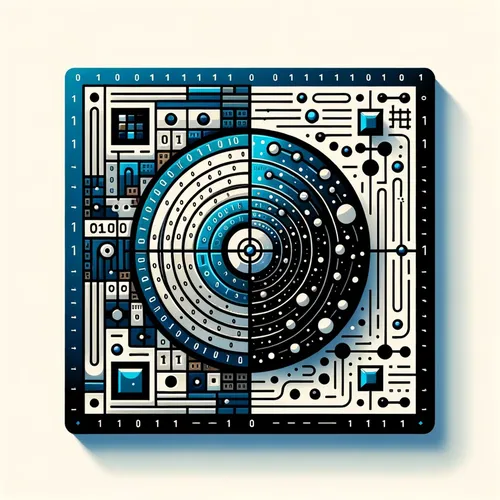Guppy: Quantum Programming's Python-Powered Leap Forward | Quantum Bits Ep. 17
- Author
- Quiet. Please
- Published
- Wed 27 Aug 2025
- Episode Link
- https://www.spreaker.com/episode/guppy-quantum-programming-s-python-powered-leap-forward-quantum-bits-ep-17--67531422
This is your Quantum Bits: Beginner's Guide podcast.
Imagine cracking open your laptop and, instead of silicon, finding a tangle of shimmering ions—each teetering between reality and possibility. That’s my daily world as Leo, your Learning Enhanced Operator, quantum computing specialist and avid explorer spanning bits, qubits, and everything between. Today, I’m absolutely thrilled, because the quantum programming frontier just shifted, thanks to the release of Quantinuum’s new language, Guppy.
This is the kind of advance I used to dream about. Until now, programming quantum computers has been like composing music on a violin using boxing gloves: precise, beautiful in theory, painfully clumsy in practice. You had to think in terms of logic gates and low-level hardware constraints, hoping your circuit would behave as intended—if environmental noise didn’t sabotage your result. But Guppy, announced just days ago, lets developers code using familiar Python-style logic—’if/then’ statements, ‘for’ loops, dynamic branches that respond as qubit states shift in real time.
What’s so dramatic about this? Picture weather forecasters. They once relied on static simulations that couldn’t adapt to sudden storms. Quantum programmers now get code that can react—a quantum program flowing, adjusting, rerouting itself just as conditions on the quantum hardware evolve. With Guppy, even advanced protocols like quantum teleportation, magic state distillation, and hybrid quantum-classical routines are as readable and accessible as your favorite Python script. The integration with the Selene emulator is the cherry on top: developers can test their quantum logic on realistic models, tweak and remix, all before pushing code onto scarce and expensive quantum hardware.
Let me take you inside a quantum lab for a moment. Picture the hum of cryogenic coolers, laser beams meticulously aligned, and in the center: ions shimmering between superposition—literally oscillating between zero and one and all points in-between. With Guppy, we can navigate this shimmering uncertainty, not just pilot it blindly. It’s like moving from candle-lit guesswork to full-throttle searchlights.
This past week also saw IBM and AMD join forces to build quantum-centric supercomputers, and a modular chip experiment from UC Riverside proved you can reliably link noisy quantum chips for powerful, scalable machines. All these headlines signal one thing: quantum computing is escaping the confines of elite labs and stepping into the developer’s toolkit, the classroom, and—soon—your desktop.
Why does this matter beyond quantum code? Because, much like the global drive for post-quantum encryption—Microsoft’s Quantum Safe initiative included—making quantum programming easier unlocks broader, safer, and smarter applications, from drug discovery to unhackable communications. Every stride on this front brings the quantum future closer to everyday reality.
Thanks for listening to Quantum Bits: Beginner’s Guide. If you’ve got questions or want a specific topic featured, send me a note at [email protected]. Don’t forget to subscribe, and remember: this has been a Quiet Please Production. For more info, check out quietplease dot AI. Stay curious—see you next time in the superposition!
For more http://www.quietplease.ai
Get the best deals https://amzn.to/3ODvOta
